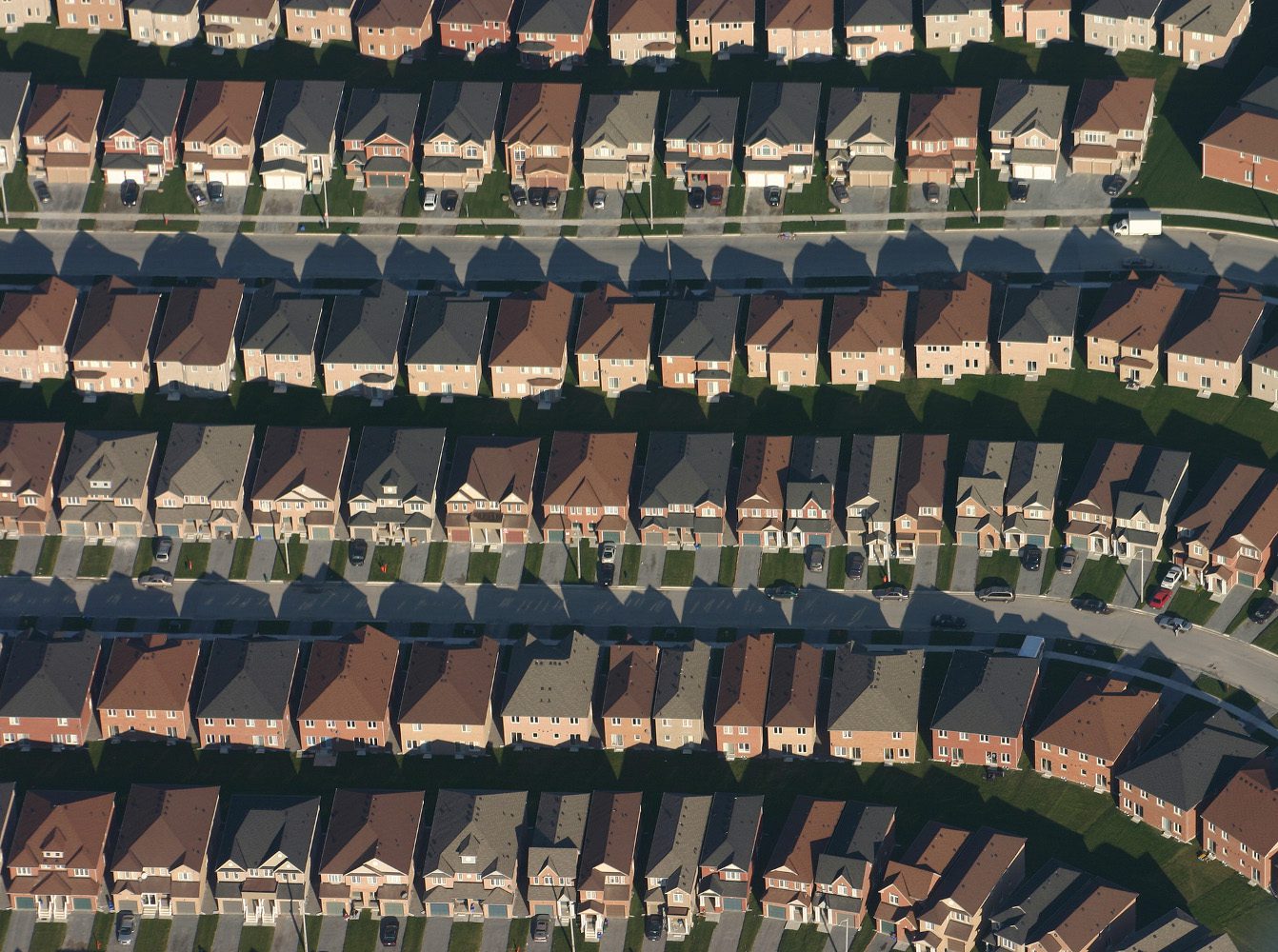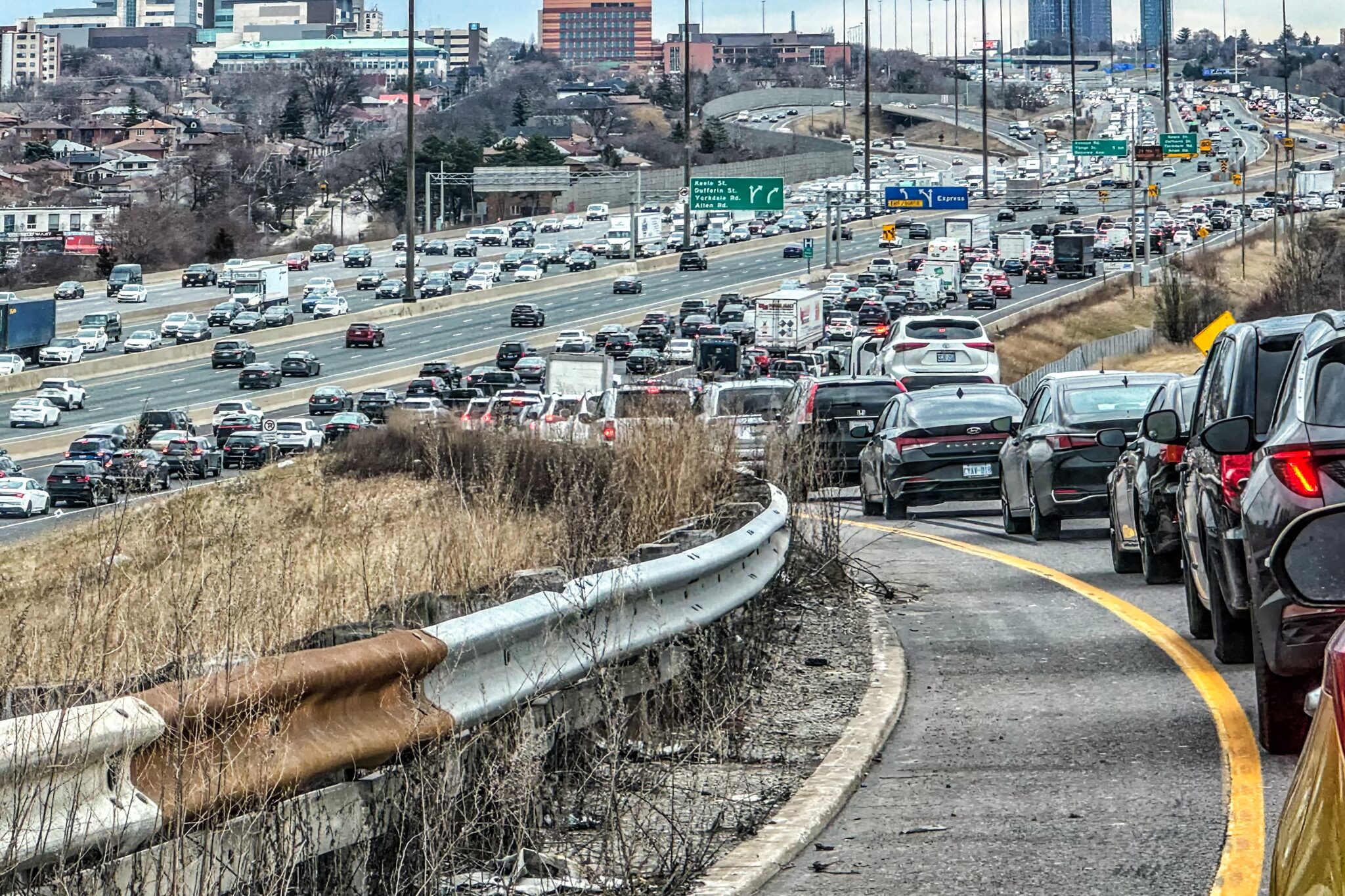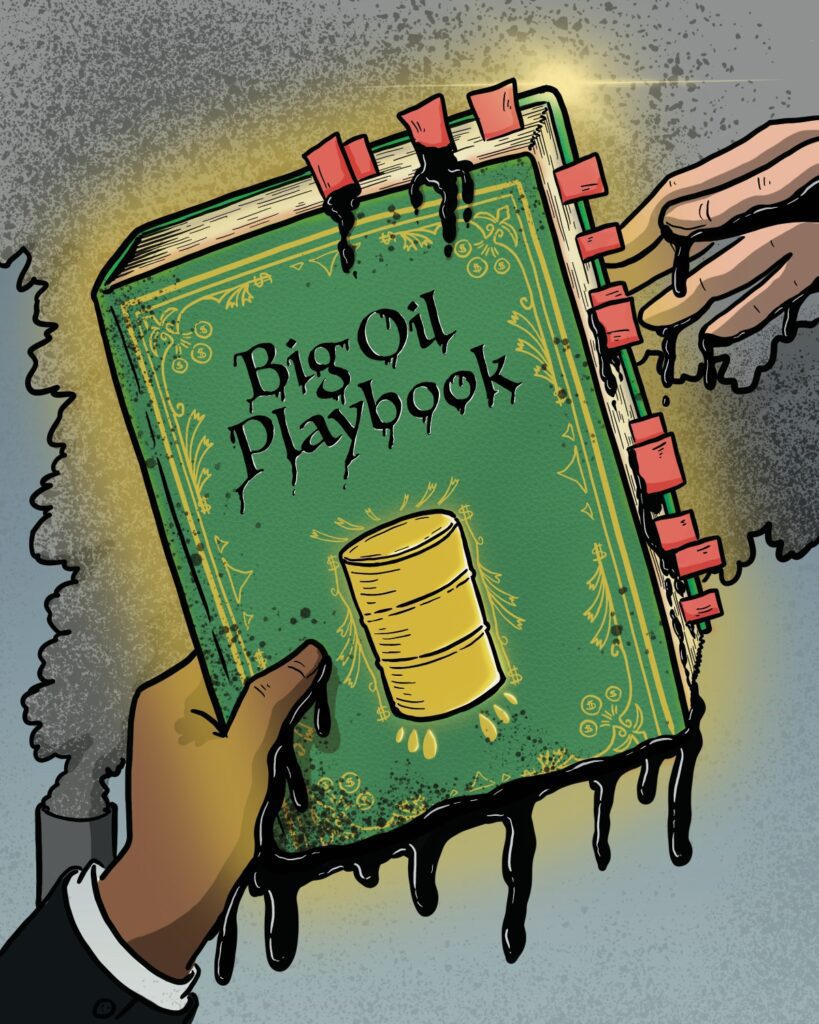What do the proposed Highway 413, the Bradford By-Pass, the 401 Mega-Tunnel, ripping up and banning bike lanes, extending the “temporary” gas tax rebate for the fourth time or canceling license plate renewal fees have in common? The answer of course is cars.
Do more highways and fewer bike lanes actually reduce gridlock?
The simple answer is no, more highways don’t make traffic better. This may seem counterintuitive as you might think that if you build a new highway across farms, forests and wetlands that it will offer a wide expanse of empty lanes just like those images in every car ad. But, this is not what happens. That’s because building new highways or adding lanes to existing ones only encourages more people to drive. This phenomenon is called induced-demand which means if you build it they will come. It has clogged up every major suburban-urban highway in North America.

So where do all these new cars come from? They often come from newly developed, car-dependent suburbs that pop up along new highways. Here in Ontario, the province has plans to open up large areas of land along the proposed Highway 413 and Bradford By-Pass for the development of this exact type of low density, car dependent sprawl. All of these new developments will be designed in a way that ensures that the people that live and work there have no other choice but to drive because this form of development cannot be serviced by transit. So all these new people will get in their cars and turn that ad-agency, open-road nirvana into the more familiar 400 series highway gridlock.
A similar future would face the mega-tunnel if it could ever be built. As soon as it opens it would start to fill up with traffic.
Highways present significant risks to our environment
The Bradford By-Pass and Highway 413 will both have massive ecological and cultural impacts that include bulldozing through the Holland Marsh, destroying the best remaining forests in Vaughan and portions of the Greenbelt and ripping out indigenous archeological sites. Of course, they will both also lock in decades of increased carbon emissions, downstream flooding, toxic salt and tire particle inputs into the rivers, wetland and streams they cross and kill millions of animals by destroying their homes and by running them over.

Highway Costs and Opportunity Costs
New highways are also very expensive to build and stay expensive to maintain forever. Highway 413 will cost at least $10 billion to build and experts have pegged the Mega Tunnel at at least $50 billion – and neither of those figures take into account the considerable amount of taxpayer money that will be required to expropriate homes and farms along the proposed routes. And all that taxpayer money spent on highways, means less funding for health care or building and operating the public transit that would get people out of their cars and leave room for those who cannot.
The story for bike lanes
As for bike lanes, evidence shows that offering people a safe way and infrastructure like separated bike lanes has traffic calming effects by encouraging more people to use cycling for transportation. This means fewer people in cars and more space on transit, especially during those crunch rush hour commute times. In Toronto, the use of the city’s BikeShare program has been rising steadily since in conjunction with the creation of more dedicated bike lanes throughout the city with the number of rides climbing sevenfold from 655,000 in 2015 to 4.6 million by the end of 2022.
Getting rid of bike lanes will also be bad for the businesses along the routes who benefit from having cyclists stop along their way. In Toronto, this has been perhaps best said by the Business Improvement Association representing members along the Bloor Street separated bike lane. They are concerned that bike lane removal on Bloor and Harbord Streets would be a disaster for their businesses.

Bikes as a viable transportation option also make building more homes inside our cities more possible. This is because without a need for people to rely on cars to get around, cities can reduce or eliminate the requirement for car parking in new buildings allowing for lower construction costs and more available space for building for residential or business uses.
More biking and less driving is of course better for the environment through reduced pollution and gives people healthy exercise as well.
What we really need is a Premier who listens to evidence
In conclusion, a bit of a dive into the populist push for “cars over all” by our provincial government shows that the approaches being taken make little sense if you drive a car, take transit or ride a bike. In fact, they will take us backward in almost every measure that counts.
It is time for a rethink and you can help our MPPs do this by taking action and telling them what you know about the misguided push for more Highways and fewer bike lanes.
Take action and tell your MP to step in and stop Highway 413.










Vovan Casino — место, где удача ждёт смелых. Здесь каждый спин — шаг в неизведанное. Готовы к приключению? казино Вован официальный сайт — и впер
Vovan Casino — место, где удача ждёт смелых.
Здесь каждый спин — шаг в неизведанное.
Готовы к приключению? казино Вован официальный сайт — и вперед
к победам!
Тысячи развлечений от мировых студий.
Каждый бонус — это трофей в вашем путешествии к успеху.
Состязания с крупными призами
Финансовая система без задержек
Играй в любое время и в любом месте
Vovan Casino — ваш путь к новым победам.